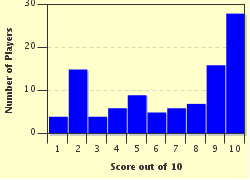Quiz Answer Key and Fun Facts
1. January 6 is the first tradition you'll see in Denmark. The evening is called "Hellig-tre-kongers-aften" (The Three Holy Kings' Night). On this night, Danes burn a special candle called "Hellig-tre-kongers-lys" (The Holy Three Kings' Candle). Why do they burn the candle?
2. Nøjesgaw is a special New Year tradition from the Danish region of Sønderjylland (South Jutland), but what does "Nøjesgaw" mean?
3. Konfirmation (Confirmation) is a tradition in the Danish church, where teenagers aged 13-15 years confirm their religion in a ceremony in the church. After confirmation, many Danes choose to have a big party in celebration, and many teenagers choose to be confirmed only because of the party and the presents. The Monday after confirmation has a special name; what is it called?
4. When it's Easter in Denmark, many people celebrate by having a Påskefrokost (Easter Dinner). At these dinners the Danes eat "Rugbrød" (Danish rye bread) and drink the traditional Danish Påskebryg, but what is a Påskebryg?
5. June the 5th is Grundlovsdag (Constitution Day), celebrating the birth of the first Danish Constitution in 1849. Is it true that this day is celebrated by a big parade in Copenhagen called Grundlovsparaden (The Constitution parade), and that many Danes wear traditional Danish clothes?
6. On a particular day, the people of Denmark traditionally assemble at the royal castle, and shout for the the monarch to come out to the balcony. When the king or queen finally comes out, the citizens start shouting "Hurra" several times. What are they celebrating?
7. The midsummer parties in Denmark look a lot like other countries Midsummer parties, and involve bonfires with witches on top. It is believed that on this night (June 23) the witches gather on "Bloksbjerg" in Germany. What is the midsummer party called in Denmark?
8. In the evening of May 4, Danes put candles in their windows; for what reason do they do this?
9. As during Easter, Danes also have a "Julefrokost" (Christmas Dinner) and a "Julebryg" (Christmas Beer). What is served at a traditional Danish Julefrokost?
10. Finally it's Christmas Eve, or "Juleaften" as it's called in Denmark. The children are looking forward to opening their presents, but when do they get to open them?
Source: Author
budde88
This quiz was reviewed by FunTrivia editor
trident before going online.
Any errors found in FunTrivia content are routinely corrected through our feedback system.


